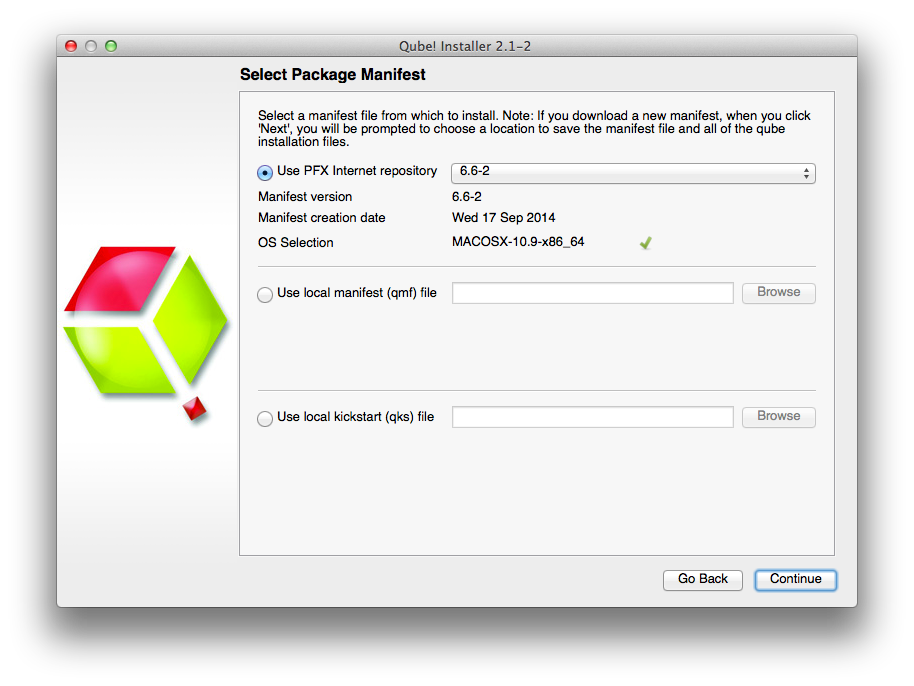...
Extract the contents of the installer zip file. Go into the folder created, right mouse click on the installer file, and run as administrator.
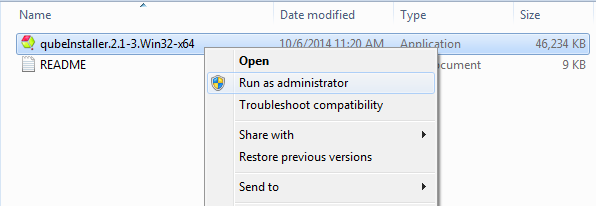
OS X
Double-click on the dmg file that you downloaded. You should see this:
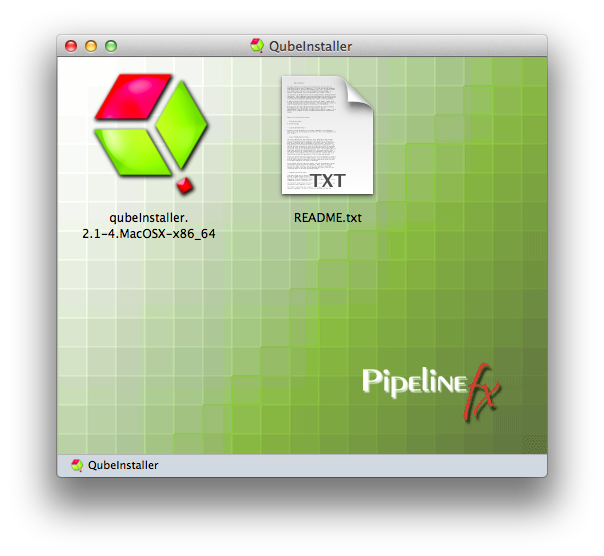
Then double-click on the qubeInstaller icon.
...
In all cases, you will now see the opening screen, followed by a license agreement, which you should read and accept before continuing.
| Section | ||||||||||
|---|---|---|---|---|---|---|---|---|---|---|
|
You will then see a screen which is asking where the packages to be installed will come from. The default is to download them from the PipelineFX repository, and you should leave this screen at its default and hit 'Continue'. You will then be asked for a location to download the software to. You can choose anywhere, but in general you will want these packages stored in a location that is visible to all machines on the network. For simple installs or evaluations, you can just choose your local Downloads directory, as shown here.
| Section | ||||||||||
|---|---|---|---|---|---|---|---|---|---|---|
|
At this point you are ready to install one of the Qube! components. If this is your first install, keep reading and install a Supervisor. Otherwise, skip that and move to installing a Worker and Client, below
...
If you have been following the installer steps above, you should now be looking at the Component Selection page, shown below. Click on 'Supervisor' as shown here:

The install wizard will look to make sure there isn't already a supervisor installed on this network / subnet, and then it will allow you to click through to install the supervisor. First it will download the additional components, and then it will install them. You should end up with this screen:
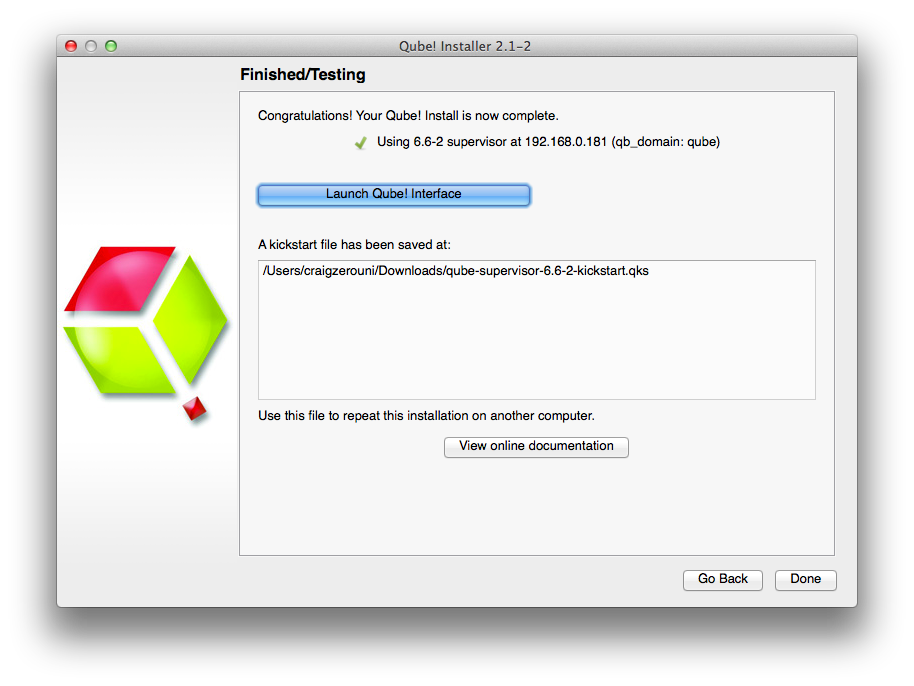
You can launch the Qube! Wrangler GUI from here if you like, but let's keep going and finish the install. So click through to the end and exit the install wizard. But continue following the instructions on this page.
...
For the purposes of this Quickstart, we are going to install both Worker and Client at the same time on the same machine. Launch the installer again, and click through to the Component Selection screen. This time, select Worker, and then also click on the checkbox labeled "Qube! ArtistView":
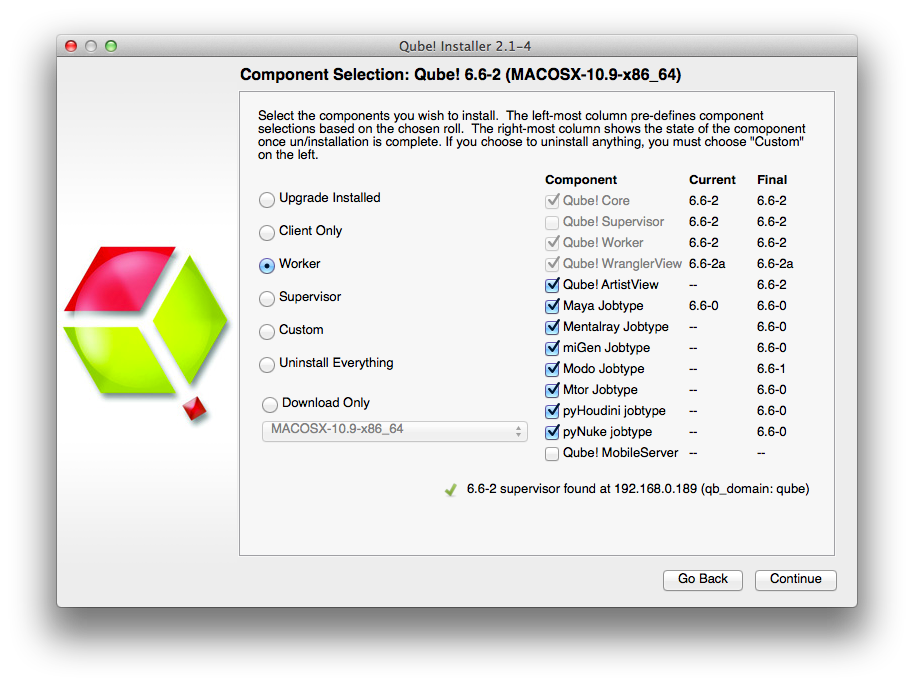
Next, you will be asked which 'mode' to run the Worker in, with a dialog like this:
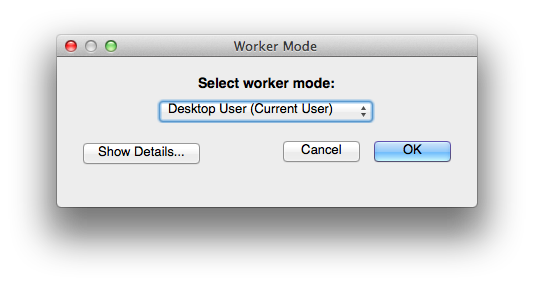
For now, choose the default, which is Desktop User mode. There is an explanation of what this means, and what mode you might want in various environments, on this page. <need a page to link to>
Again, the installer will download the selected components, and then install them. When this completes, you will see buttons allowing you to submit some test jobs. We'll do that in the next section. So keep reading...
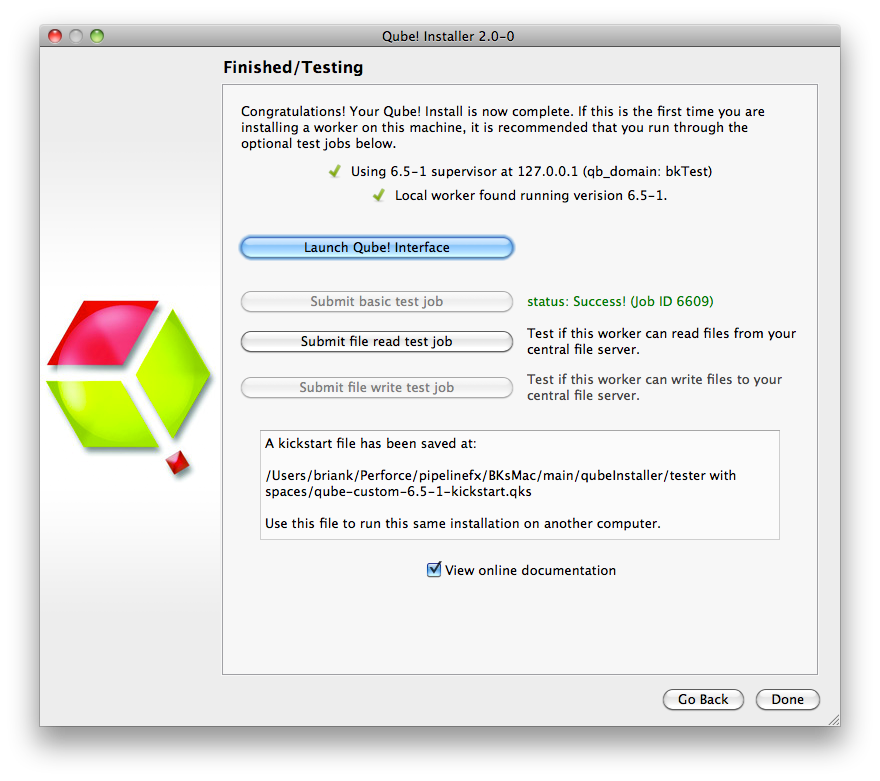
| Anchor | ||||
|---|---|---|---|---|
|
...
Now click on "Submit file read test job". This will pop up a dialogue box. You should choose a file that is accessible to both Worker and Supervisor, typically on a mounted network drive. If you are testing Qube! such that the Worker and the Supervisor are on the same machine, then you can choose a local file.

You should then seen the same "Pending", "Running" and "Success!" messages.
...
At this point, exit the installer. Then launch the Qube! Wrangler View. On Windows, it will be the red & green desktop icon. On OS X, it will be in Applications/pfx/qube. On Linux you type 'qube'. You should see this UI:
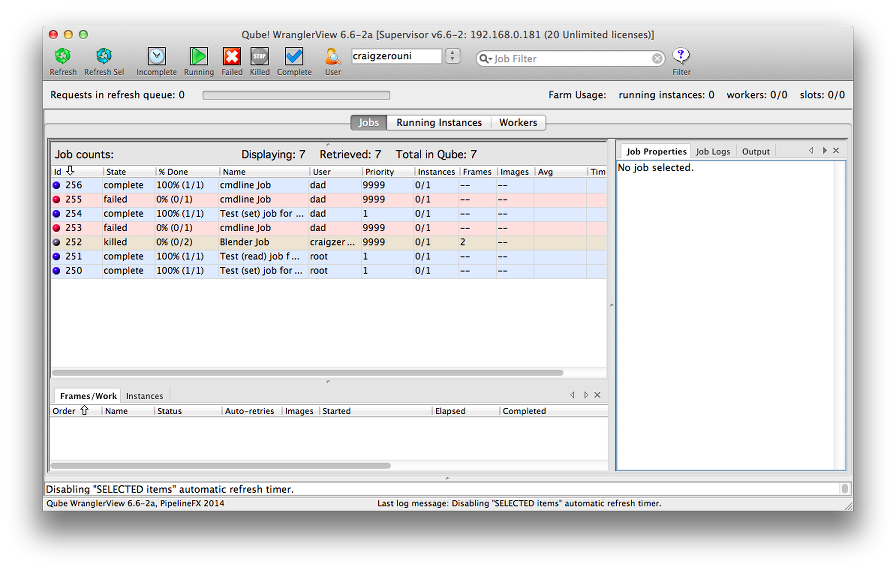
Let's use this to launch a quick commandline job, just to see how this works. From the menu bar, choose Submit -> Cmdline Job.
You'll get this UI. Fill in the command with something like the command shown (Linux & OS X):

For Windows, the commands could be this:

Then click on Submit and refresh the Wrangler view. You should see your job pick up, run and complete. The output from the commands you typed in the box will be in the right pane, under Job Logs / Stdout Log. Notice that the job runs as the user you are logged in as, while the test jobs you submitted from the installer were run as root (except on Windows, where they will still run as the person using the installer).
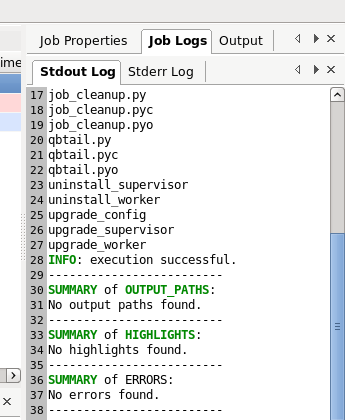
At this point, your supervisor and worker are up and going. You can install more workers and/or clients by using the installer or by using the quickstart files. <need a link to that explanation> You can find help with submitting specific kinds of jobs, for example Maya or After Effects, in the Submitting Jobs section.
...


